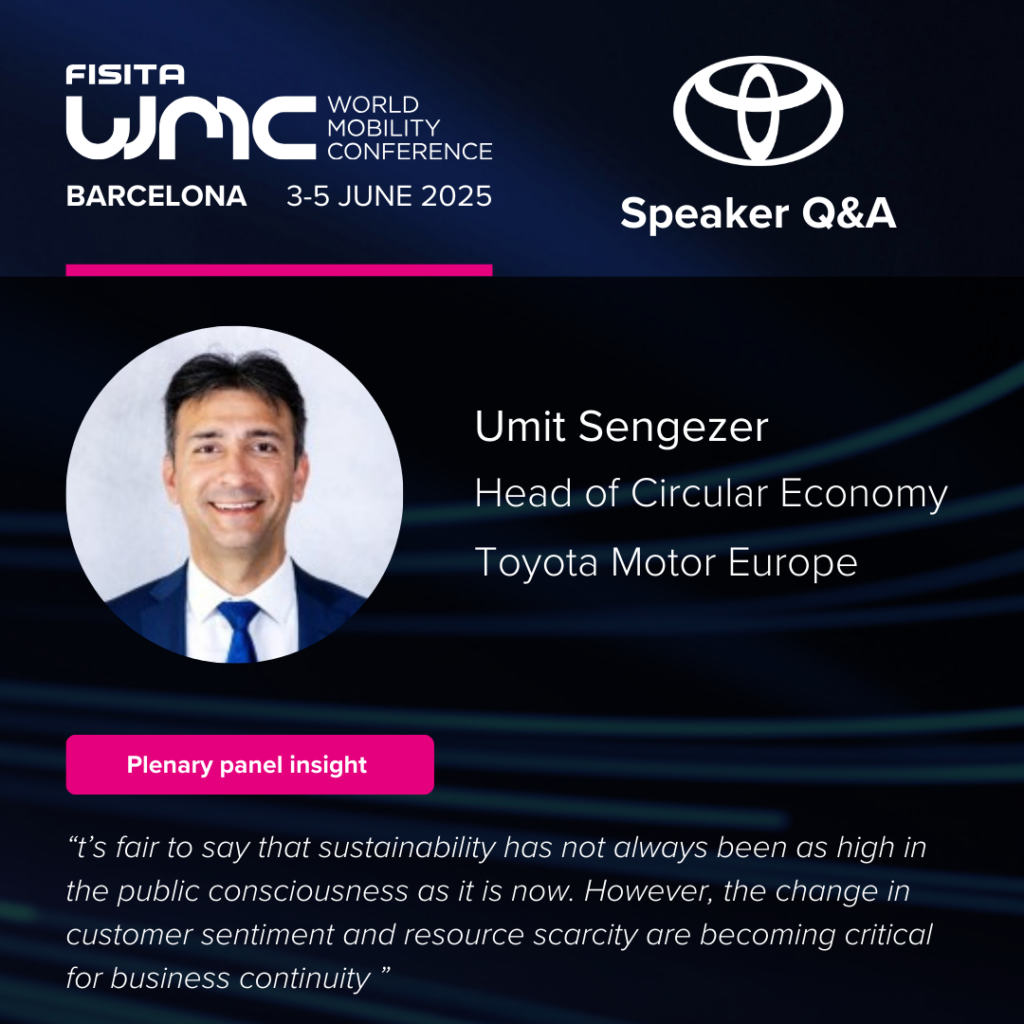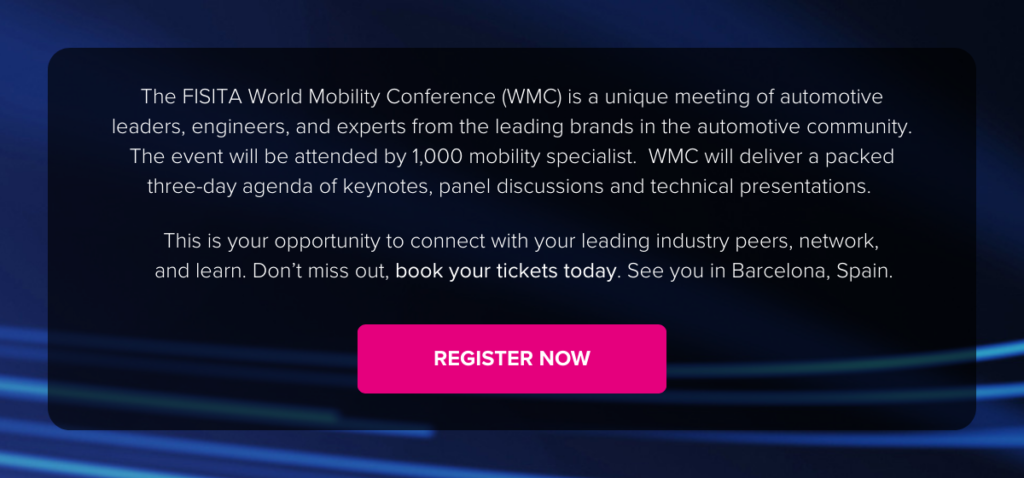Umit Sengezer, Head of Circular Economy at Toyota Motor Europe, talks to FISITA CTO Martin Kahl about sustainable mobility and the circular economy
“Let’s embrace the circular economy business model evolution together,” says Umit Sengezer, Head of Circular Economy at Toyota Motor Europe.
At the 2025 FISITA World Mobility Conference, Umit will join the plenary panel discussion on sustainability and circularity in the automotive industry, alongside experts from The Future is Neutral, Geely Holding, and Robert Bosch.
Ahead of his appearance at the conference, FISITA spoke to Umit about sustainable mobility, propulsion system technologies, and the transfer of circular economy principles between the automotive industry and other industry sectors.
Automotive is one of the most disruptive and disrupted industries; from your perspective, is sustainability being sufficiently embraced as a business strategy, or is it still seen as a compliance cost? And how do you see this changing?
I think it’s fair to say that sustainability has not always been as high in the public consciousness as it is now. However, the change in customer sentiment and resource scarcity are becoming critical for business continuity. This is why we continue to embrace sustainability with a balanced approach and turn it into a business opportunity with new ways of working, such as our recently introduced Toyota Circular Factory concept.
Electrification is just one way in which automakers can achieve cleaner mobility; what else should the industry consider in the quest to reduce the environmental impact of mobility?
Toyota has been working on the Multi-Path Way strategy, where we provide a choice of sustainable solutions to our customers, without leaving anyone behind. Electrification, notably HEV, PHEV, BEV and FCEV, covers four of the solutions.
It’s fair to say that sustainability has not always been as high in the public consciousness as it is now. However, the change in customer sentiment and resource scarcity are becoming critical for business continuity
The question here is not only limited to the powertrain or the technology, but also how we deliver the products and services to our customers, what mechanisms and governance models we put in place to ensure we do the right thing along the whole value chain by engaging with our suppliers and partners with transparency.
Circular economy is becoming an accepted business practice in the automotive industry, but it’s far from maturity. How easy is it to build circularity into mass-market business models and into mainstream manufacturing processes and operations?
We are in early days of circularity, and there is currently no standard definition of circular economy in the automotive industry. With good intention, many OEMs, suppliers, and industry experts are trying to materialise the ideas into action and industrialise at scale. Not having a blueprint in our hand is making things slower, but also giving us chance to think outside the box and be more agile and innovative in designing a circular economy business practice. We all need to embrace circular economy, and keep trying to improve until we optimise the business model.
What can the automotive industry learn from other industries about sustainability and circular economy? And what can other industries learn from automotive?
Industries like electronics, textiles, and pharmaceuticals have successfully implemented some elements of circular business models, focusing on product lifespan extension, recycling, and refurbishing. The automotive industry can learn from these practices to enhance vehicle lifecycle management and reduce waste.
You’re a panellist at the FISITA World Mobility Conference. What will be your key message to delegates?
My message is clear and simple: let’s embrace the circular economy business model evolution together.

